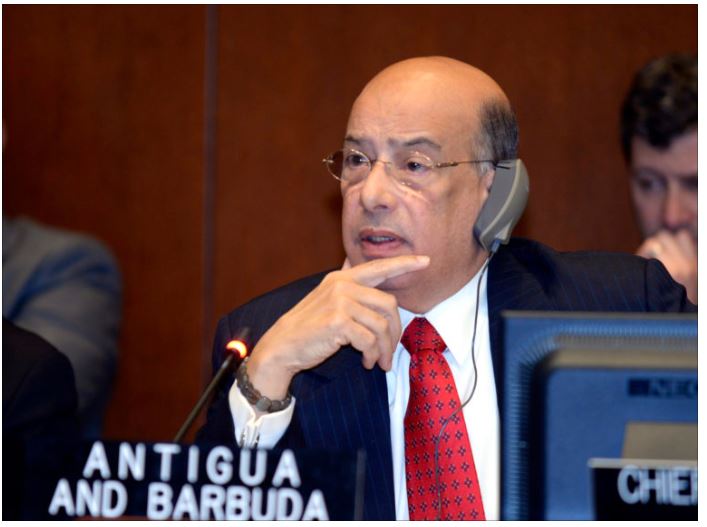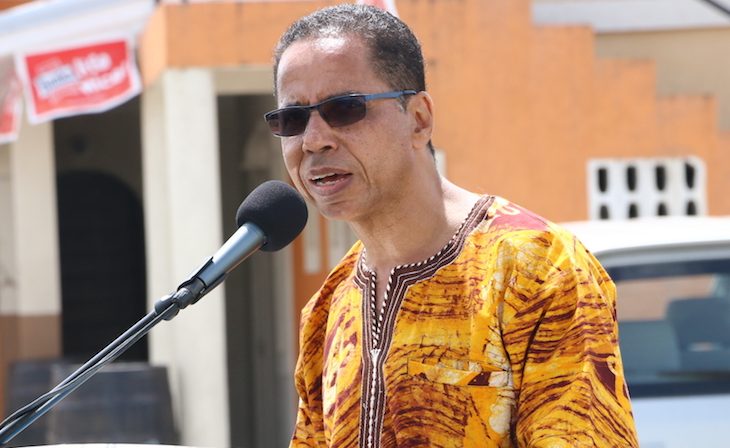By Andwele Boyce
Everything Dr Peter Phillips does between now and the next election, constitutionally due no later than 2021, will be a test for him and the People’s National Party (PNP) he leads.
As far as tests go, the task of naming a shadow cabinet in the aftermath of the bruising September 7th leadership challenge is up there.
No doubt was it a difficult undertaking. The choices made and not made are telling both of Phillips’ feelings and continued failures.
Why so big
The choice of Dr Philips to name a 31-member team as well as political appointees requires some explanation, with particular focus on the strategic goals. What is the purpose of the political appointees? Does this foreshadow what a government led by Phillips looks like? In the absence of a proper explanation, the structure may be interpreted as organizational confusion and what has now become a lack a strategy, a characteristic associated with a Phillips PNP.
The elephant in the room
The appointment of Peter Bunting to the education portfolio is window dressing. Firstly, education is not where his natural abilities lie. As a former Minister of National Security and noted banker and businessman, there are better spots for Bunting, the portfolio of industry chief among them.
Dr Phillips was aware that he needed to include Bunting, for if he did not, gnashing of teeth would begin. Not to mention, it would be a clear indication that all was not well in the party after the challenge. Of course, the PNP has historical experience with entrenched camps and deep divisions. Experiences that do not need to be repeated.
Although, reportedly, Bunting is satisfied with his placement, the elephant in the room is that placing Bunting in a portfolio in keeping with his expertise would be to place him closer to the centre of power. Traditionally education is not where you would put the man who lost by a mere 76 votes and who is naturally next in line for leadership.
Perhaps in misplacing Bunting, Philips is trying to ensure that there is less opportunity for a coup or the shaenfraude he accused Bunting of so frequently during the campaign. In his way, he has done what he can to secure his spot but he has also fumbled the order.
The choices
The decision not to include Angela Brown Burke is perhaps the least surprising of all the choices. We recall that Angela Brown Burke’s endorsement of Bunting and her active participation in his campaign sent shockwaves through the nation. Perhaps Phillips recorded it as one of the more stinging disappointments of the campaign and have treated her accordingly, therefore leaving her out of the fold and away from the portfolio of community development with which she has been associated.
The choice for Dr Andre Haughton as the one to oversee planning and development is interesting. He is young, bright and capable. However, as stated above there needs to be a clear articulation of his role, and the role of all political appointees.
The choice for Mark Golding represents the greatest attempt at extending an olive branch; something Phillips needs to get accustomed to doing time and again in the coming months. It is imperative that the attempts at reconciliation are more than superficial. Former Jamaica Prime Minister PJ Patterson in writing of the leadership contest between himself and Portia Simpson Miller intimated in his political memoir that it is the victor in a leadership challenge who has the responsibility of bringing the party together. I think it is safe to say that Phillips has not gone far enough in discharging this responsibility.
The exclusion of Dr Dayton Campbell from the grouping is a misstep though not surprising. Campbell was a vocal and loud critique of Phillips in the campaign in his role as campaign manager. Campbell’s relative youth and undeniable reliability as well as the stridence of his presentations in the house and the fact that he is always well researched is an asset that Phillips needs in a party that as one of the oldest in the region behaves every bit its age.
The task ahead
Peter Phillips must recognize that he has a very short time to energize the PNP and bring it together. He is up against Andrew Holness who is young and energetic and a Jamaica Labour Party that looks cohesive and seems to only be consolidating support at this stage.
There are critics and critiques of the JLP, not to mention claims about corruption in the name of PETROJAM and Caribbean Maritime University. However, it must be noted that as of yet nothing has stuck. We were witness to the swiftness and agility of the Jamaica Labour Party last week with the resolution to extend the prohibition on the release of Cabinet documents to 70 years. There was great public outcry and social media was ablaze with hash tags and critical questions, and soon the resolution was withdrawn. By contrast, by the time the JLP had withdrawn the resolution and branded themselves an attentive administration, the PNP had not yet had an official party position on the issue.
The task ahead for the PNP is great and Peter Phillips must move away from that which he has always done. Victory will not be won by playing old habits and bad / no strategy
(Andwele A. O. Boyce is a communicator and Disability Advocate who holds degrees in Political Science, International Trade Policy, and Law)




It is frightening how so many people seems to be holding Andrew Holness up on a pedestial when he is making a mockery of what a good leader should be , his youthfulness shows that he is not ready for this
PETER Phillips has rescue this country from the brink of economic pit fall why is his age a factor in his leadership ability